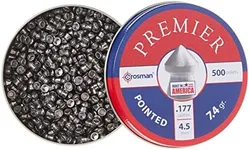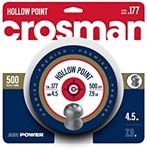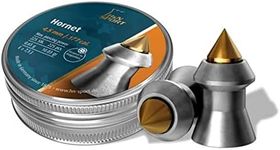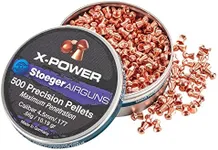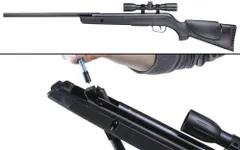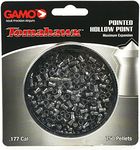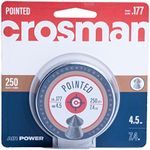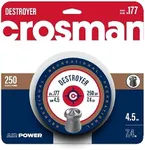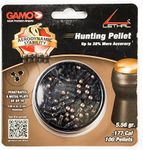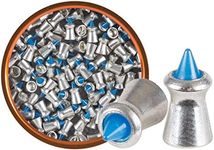Buying Guide for the Best 177 Hunting Pellet
Choosing the right hunting pellet is crucial for ensuring accuracy, power, and effectiveness in your hunting endeavors. The right pellet can make a significant difference in your shooting experience, so it's important to understand the key specifications and how they align with your needs. Here are the key specs to consider when selecting hunting pellets and how to navigate them to find the best fit for you.CaliberCaliber refers to the diameter of the pellet and is a critical factor in determining compatibility with your airgun. Common calibers include .177, .20, .22, and .25. The .177 caliber is known for its high velocity and flat trajectory, making it ideal for small game hunting and target shooting. If you are looking for precision and long-range shooting, .177 might be the best choice. However, for larger game or more stopping power, you might consider larger calibers like .22 or .25.
Pellet ShapePellet shape affects the aerodynamics, accuracy, and impact of the pellet. The most common shapes are wadcutter, domed, pointed, and hollow point. Wadcutter pellets are flat-headed and best for target shooting due to their clean holes in paper targets. Domed pellets offer a good balance of accuracy and impact, making them versatile for both hunting and target shooting. Pointed pellets are designed for penetration and are suitable for hunting small game. Hollow point pellets expand upon impact, providing maximum stopping power for hunting. Choose the shape based on whether you prioritize accuracy, penetration, or stopping power.
WeightPellet weight is measured in grains and influences the velocity, trajectory, and impact energy. Lighter pellets (6-8 grains) achieve higher velocities and flatter trajectories, making them suitable for long-range shooting and small game hunting. Medium-weight pellets (8-10 grains) offer a balance between velocity and impact, making them versatile for various hunting scenarios. Heavier pellets (10+ grains) provide more impact energy and are ideal for larger game or situations where stopping power is crucial. Consider the type of game you are hunting and the distance you will be shooting to determine the appropriate weight.
MaterialPellets are typically made from lead or lead-free materials. Lead pellets are the most common and offer good performance in terms of accuracy and impact. However, lead-free pellets, made from materials like tin or alloy, are an alternative for those concerned about environmental impact or lead exposure. Lead-free pellets are generally lighter and may achieve higher velocities but can be more expensive. Decide based on your performance needs and environmental considerations.
Brand and QualityThe brand and quality of the pellets can significantly affect their performance. Reputable brands are known for consistent manufacturing standards, which ensure uniform pellet size and weight, leading to better accuracy and reliability. It's often worth investing in pellets from well-known brands to avoid issues like inconsistent performance or damage to your airgun. Research reviews and user experiences to find brands that are highly recommended for your specific hunting needs.
